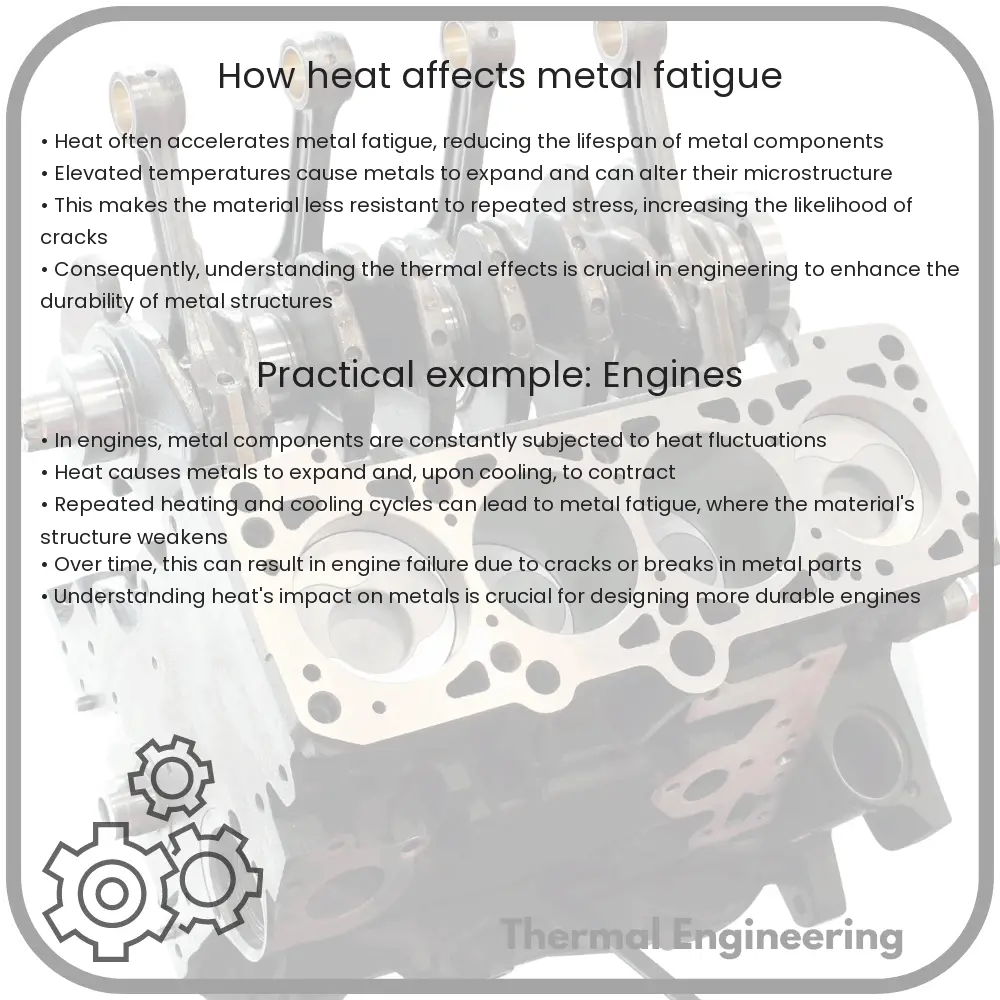Learn how temperature impacts metal fatigue and its significance for engineering structures, detailing the interplay between heat and material strength.

Understanding How Heat Affects Metal Fatigue
Metal fatigue refers to the weakening or structural deterioration of metal under repeated stress. It is a critical factor in the safety and performance of many engineering structures, such as bridges, aircraft, and automobiles. Notably, temperature plays a significant role in how metal behaves under stress. This article delves into the effects of heat on metal fatigue, providing a concise yet comprehensive explanation of the phenomenon.
Basics of Metal Fatigue
Metal fatigue occurs because of cyclic loading, where the repeated application of load leads to the initiation and growth of cracks until the metal ultimately fails. Each load application causes microscopic changes in the metal’s structure, which accumulates over time. The factors that influence metal fatigue include the magnitude and frequency of the applied load, the material’s properties, environmental conditions, and temperature.
Role of Temperature in Metal Fatigue
Temperature can affect metal fatigue in three primary ways: by altering the material’s microstructure, affecting its strength, and changing the rate of crack growth. Here’s how varying temperatures can influence these factors:
- Microstructural Changes: At higher temperatures, the microstructure of metals can change. This phenomenon, known as creep, involves the slow, permanent deformation of the material under a constant load. This deformation can lead to new or accelerated fatigue processes.
- Effect on Material Strength: Generally, increasing the temperature leads to a decrease in material strength. Elevated temperatures can reduce the yield strength and tensile strength of metals, making them more susceptible to fatigue as they are less able to resist applied stresses.
- Crack Growth Rate: The rate at which cracks grow within a metal can increase with temperature. At higher temperatures, the mobility of atoms in the metal’s crystal lattice increases, facilitating faster crack propagation.
It is important to note that the effect of temperature on metal fatigue is not uniform across all metals. Different materials respond to heat in different ways based on their composition and mechanical properties. For instance, aluminum alloys and titanium may exhibit significantly different behaviors under thermal stress compared to steel.
Calculating Thermal Effects on Fatigue Life
To predict how heat will affect the fatigue life of a metal, engineers use various fatigue life prediction models, which are often based on the Coffin-Manson relationship:
\[ \Delta \epsilon / 2 = \epsilon_{f’} (2N)b + \epsilon_{p} (2N)c \]
Where:
- \(\Delta \epsilon / 2\) is the strain range,
- \(\epsilon_{f’}\) is the fatigue ductility coefficient,
- \(N\) is the number of cycles to failure,
- \(b\) and \(c\) are the fatigue strength exponent and fatigue ductility exponent, respectively,
- \(\epsilon_{p}\) represents the plastic strain.
This model helps estimate the cyclic strain range, accounting for both elastic and plastic components of strain, which define how metals can endure varying thermal conditions over many cycles.
Conclusion
In conclusion, understanding how heat affects metal fatigue is crucial for designing safer, more reliable engineering structures. By taking into account the role of temperature in altering material properties and behavior under stress, engineers can better predict the longevity and safety of metal components and structures exposed to cyclic loading in high-temperature environments.
Whether it’s in aerospace engineering, automotive industries, or civil construction, accounting for thermal effects in metal fatigue ensures enhanced safety and performance across a multitude of applications.